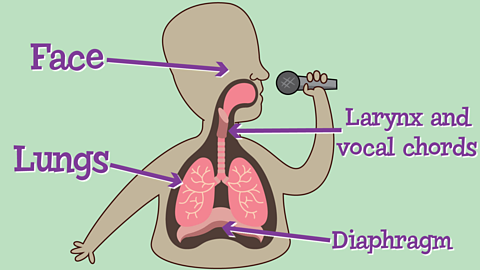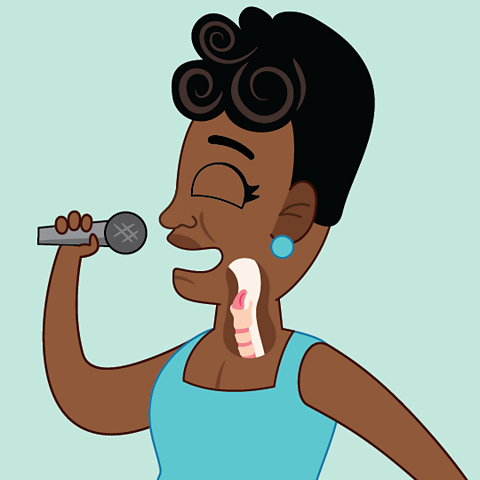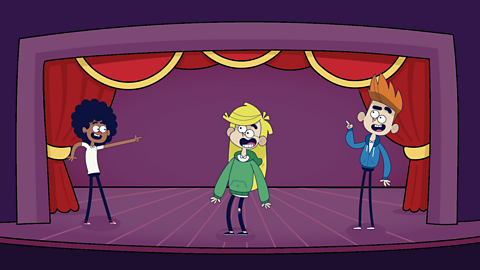Why do we need to warm up?

Before a race or a match, athletes warm up their muscles to prevent injury and check their body is ready. For example, you might see footballers at the side of the pitch stretching.
As a singer, we need to do the same.
Warming up parts of your body before singing, not only protects your voice, but also makes you sound better.

How many parts of the body can you name, that might be involved in singing and need warming up?
When singing, it's important we warm up the parts of our body we need when singing.

Breathing

If you imagine your voice is a machine, then breath is the fuel.
When we sing, we need to take deep breaths to help us sing through lines of lyrics.
The muscle that helps us with this is called the diaphragm.


The diaphragm supports our lungs as we breathe.
If you place your hands on your tummy, between your belly button and rib cage, you can feel your diaphragm move as you breathe in and out.
Breathing challenges

Let's warm up our lungs and diaphragm with some challenges.
Take a big breath and try not to let your shoulders move up.
Breathe in slowly. Now try taking a breath in like you have just had a shock. Sometimes songs require singers to take a breath really quickly, this is when a 'shock breath' is used.
Breathe in while counting to four in your head. Now, breathe out slowly for a count of eight.
Breathe in for a count of four. Breathe out even slower for a count of 12. As your lungs and diaphragm get stronger, this'll get easier.

Facial muscles

Did you know that humans have 43 muscles in their face and lots of these are used for singing. They help us shape the sound.
If you want to warm up your facial muscles, imagine you have just been given the world's largest toffee!
Pop it in your mouth and start to chew. It's so big!
This toffee is sticky so you really have to pull your mouth wide apart.
As it gets smaller, try chewing faster and faster.
Finally, it's small enough to take a big, gulping swallow.
The larynx

The larynx is inside our throat. Sometimes it’s called the voice box.
Inside this, we have a part called the vocal chords.
As we sing, our vocal cords vibrate at different speeds. They lengthen and shorten, as well as get thicker and thinner.
A really good way to warm them up, is by pretending to be a siren!
Have a go at making a 'woo' sound. Try to make your voice follow the patterns of the lines below. Maybe even trace them with your finger in the air.


Activities
Quiz
Bitesize Primary games. gameBitesize Primary games
Play fun and educational primary games in science, maths, English, history, geography, art, computing and modern languages.

More on Singing
Find out more by working through a topic
- count5 of 6

- count6 of 6

- count1 of 6

- count2 of 6
